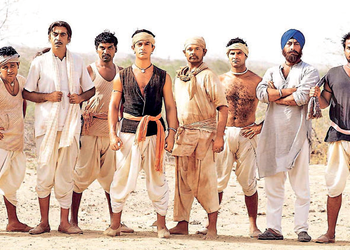The Ideal Viewer, The Speaking Tree

A creative, informed audience is as important to art mediums like cinema, as are those who are part of the production team, writes PIYUSH ROY
A fellow critic friend and fan of films from the Marvel Cinematic Universe,was insistent on watching its latest big spectacle,Avengers: Infinity War, not just in any theatre, but one that justified the experience of its technical achievement in an assured company of appreciative fellow viewers. The joy of experiencing ‘awe’— the adbhuta rasa — grows manifold in the company of knowledgeable audiences who interact with a film, he had suggested.
Interactive Audience
The line of difference between an interactive audience and a disturbing audience isn’t a thin one.An interactive audience will show its appreciation by laughing at the right cues, clapping at thrill moments and occasionally whistling and shouting praise around standout events and moments. These activities shared in unison with a majority of the audience members add to the overall viewing experience and impact of a scene. I still remember how an entire theatre had turned into a cricket stadium in the second half of Ashutosh Gowariker’s Lagaan, cheering for its protagonist Bhuvan, Aamir Khan, and his rag-tag team of 11 taking on the might of professional British cricket players.
In contrast,the ‘disturbing audience’ will keep commenting on every scene, reveal the end in a thriller, always enter late and/or indulge in private chatter, not caring for the community nature of a public screening experience. For them, the theatre remains a mere large extension of their private viewing space.
I have often seen such elements being issued a warning by ushers, if not immediately shooed to silence by fellow viewers in many screenings in the west. What I admired most in my movie watching experiences with European audiences was the staying of many, until the end of the credit roll — especially of films they liked — giving due respect to the many technicians behind its making. Getting up when the end credits are still on is as disrespectful as walking out when the actors are taking a bow at the end of a play.
In India, appreciative audiences have kind of resigned themselves to react to the above intrusions as an unavoidable baggage of public viewing. Thankfully, in some urban multiplexes, the audiences are learning to respect good art, but they remain a far cry from being considered a rasik — that fabulous term coined by our art critics two thousand years ago to define the ideal viewer.
Roles and rules of behaviour hadn’t been limited to actors and directors only; they were extended to audiences as well, to make viewing, an entertaining and enlightening experience. According to the foundational concept guide and seminal Indian review reference for arts, poetry, performance and drama,the Natyashastra,‘One who is attentive, honest, able to argue and reason, one who can detect a fault and (yet) be sympathetic — such a person is qualified to be a spectator.’
The bar for the critic is even higher — ‘They should be of good character, of quiet behaviour and learning, with a desire for a good name, impartial and advanced in age;they should be experts in all six varieties of natya, drama, and in the playing of four kinds of musical instruments; pure minded, not greedy, knowing the language and dialects, having practical knowledge of arts and crafts, of the four kinds of abhinaya — physical action, verbal, emotional and the language of costumes — of rasa, the appreciation sentiment evoked in an audience and bhava, acted expressions, and also of the rules of prosody, rhythm, stress and intonation of speech, and other shastras.’
Of course, these qualifications are too demanding to be present in entirety in one individual,but a critic can keep aspiring to acquire them with his levels of absorption deciding one’s review contributions as ‘superior, middling or inferior’.
Varying Behaviour
So,where do we individually stand in that rating? Doesn’t our own behaviour vary when we are watching the same film with our elders,family members, friends,spouse or lovers? The same boy, who protectively shields his girl friend from other ‘noisy’ men in a theatre, and quietly watches with his parents, doesn’t shy away from indulging in some ‘disturbing’ dare in the company of friends.The anonymity of the dark that a theatre assures offers a fabulous peek into our dormant personalities and culture of upbringing in the way it’s able to provoke the best and worst in us.
It is not the frontbenchers or the so-called disrupted mass that always makes the cat calls. I recently experienced a gang of smartly dressed, seemingly educated, young boys sniggering with disturbing counter notes through certain ‘bold’ scenes in a new Marathi film, Nude (Chitra in Marathi), that depicts the journey of a model,who poses in the buff for a living. It was obvious that they had come to the movie to not be challenged by its provocative thoughts on art and its appreciation,but to let out their wild asides in the dark.
Credit goes to the mature treatment of the director of Nude,Ravi Jadhav,for being able to sanitise its explicit moments of any titillation. It’s good to see how more of our filmmakers, young, debuting and veteran are maturing in their handling of taboo themes and topics on camera.The near disappearance of ‘the onscreen kiss’ from being a talking point in a film’s media coverage proves this point. But despite this, one wonders when our audiences will mature as well. ■
The Ideal Viewer, The Speaking Tree, 01 June 2018
A creative, informed audience is as important to art mediums like cinema, as are those who are part of the production team, writes PIYUSH ROY
https://www.speakingtree.in/article/the-ideal-viewer
The writer is an Indian National Film Award winning critic, writer, curator and film scholar based in Mumbai

Comments are closed.